Abstract
Nocturnal CO2 uptake by a Crassulacean acid metabolism succulent, Agave deserti Engelm. (Agavaceae), was measured so that the resistance properties of the mesophyll chlorenchyma cells and their CO2 concentrations could be determined. Two equivalents of acidity were produced at night per mole of CO2 taken up. The nocturnal CO2 uptake became light-saturated at 3.5 mEinsteins cm−2 of photosynthetically active radiation (400-700 nm) incident during the preceding day; at least 46 Einsteins were required per mole of CO2 fixed. Variations in the daytime leaf temperature between 20 and 37 C had little effect on nocturnal CO2 uptake. After the first few hours in the dark, the leaf liquid phase CO2 resistance (rliqCO2) and the CO2 concentration in the chlorenchyma cells (ciCO2) both increased, the latter usually reaching the ambient external CO2 level at the end of the dark period. Increasing the leaf surface temperature above 15 C at night markedly increased the stomatal resistance, rliqCO2, and ciCO2.
The minimum rliqCO2 at night was about 1.6 seconds cm−1. Based on the ratio of chlorenchyma surface area to total leaf surface area of 82, this rliqCO2 corresponded to a minimum cellular resistance of approximately 130 seconds cm−1, comparable to values for mesophyll cells of C3 plants. The contribution of the carboxylation reaction and/or other biochemical steps to rliqCO2 may increase appreciably as the nighttime temperature shifts a few degrees from the optimum or after a few hours in the dark, both of which caused large increases in rliqCO2. This necessitates a large internal leaf area for CO2 diffusion into the chlorenchyma to support moderate nocturnal CO2 uptake rates by these succulent leaves.
Full text
PDF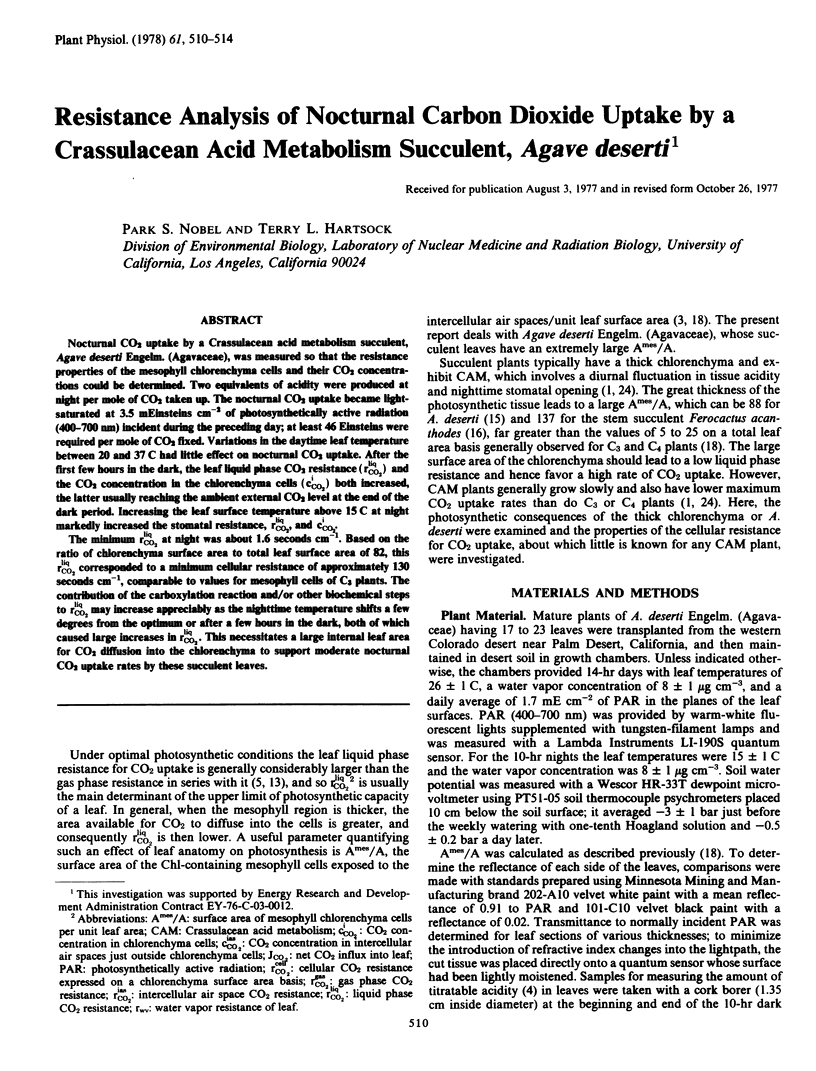
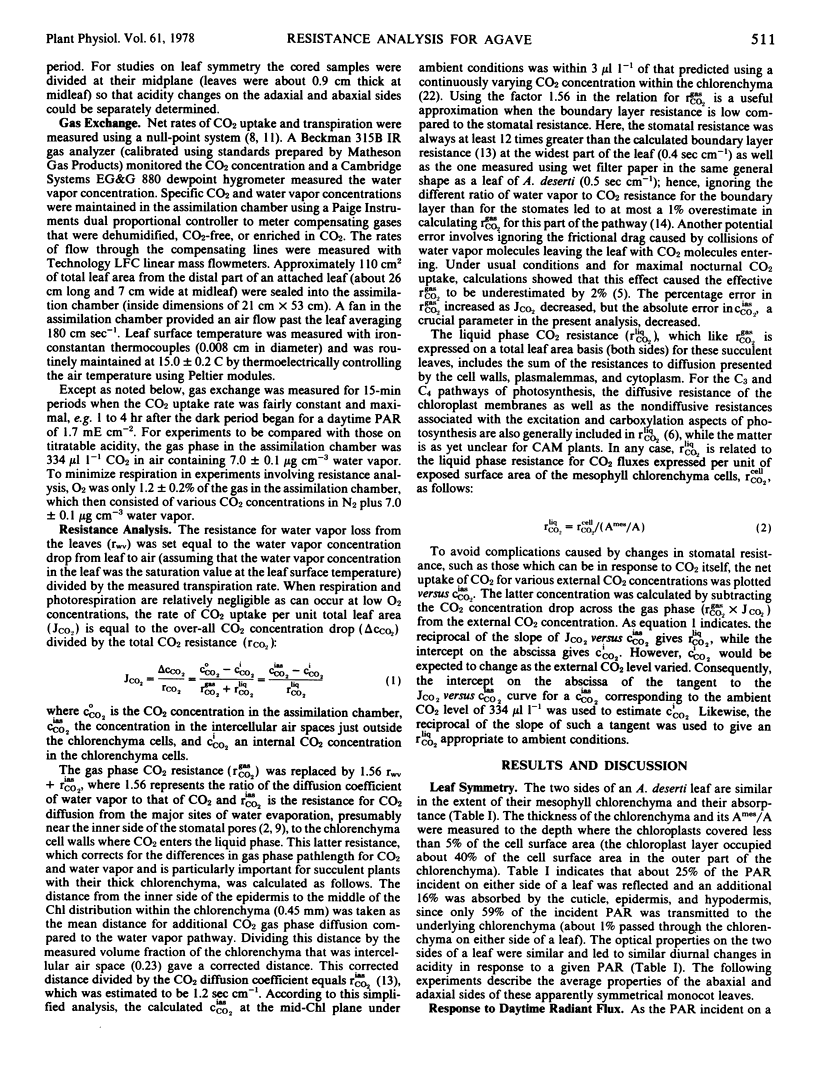
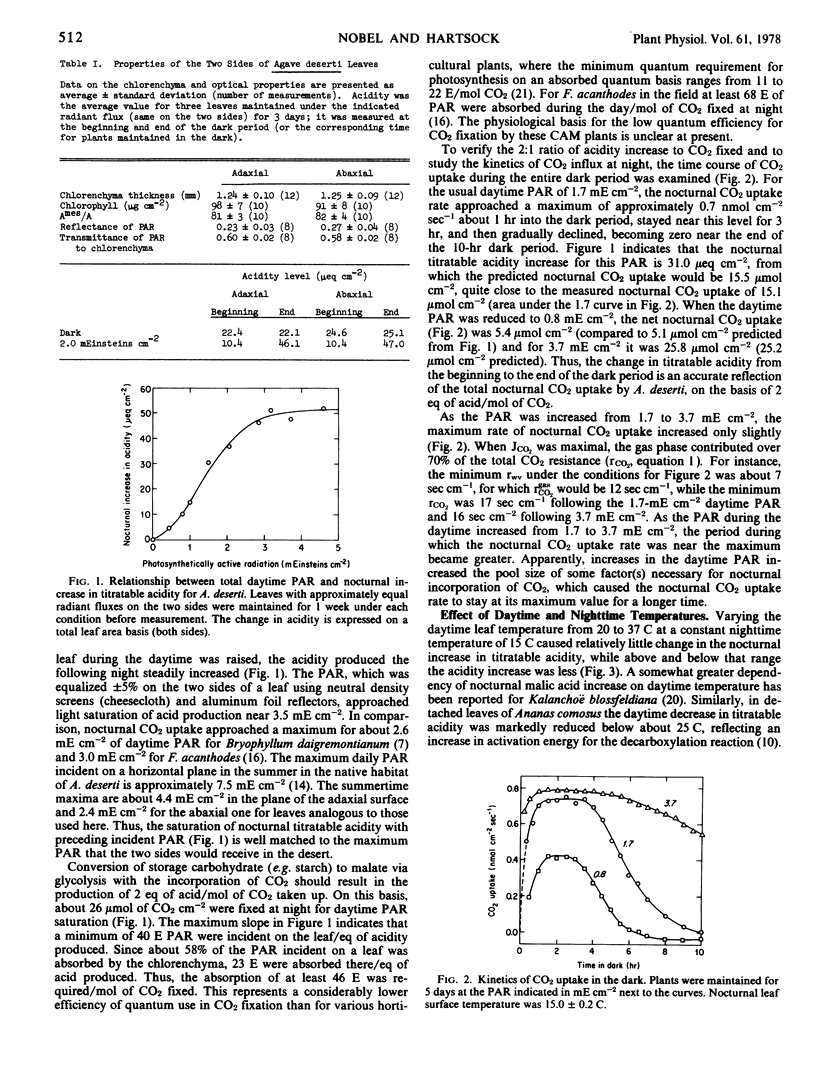
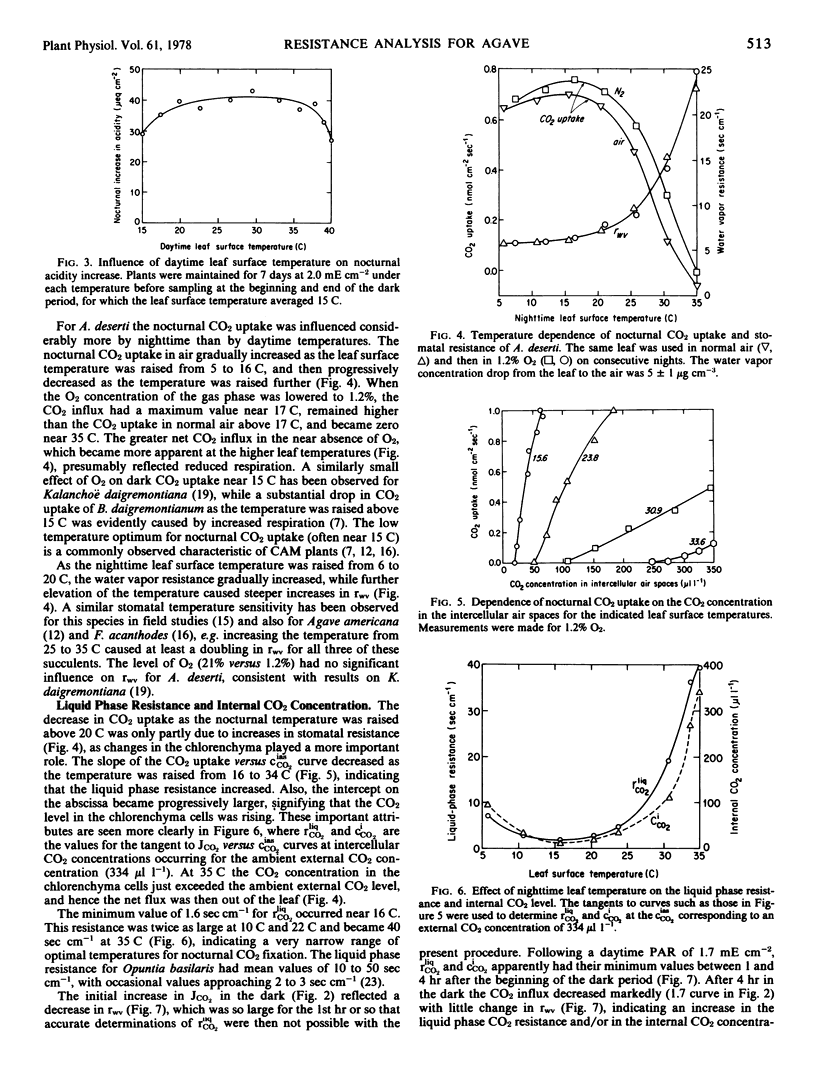
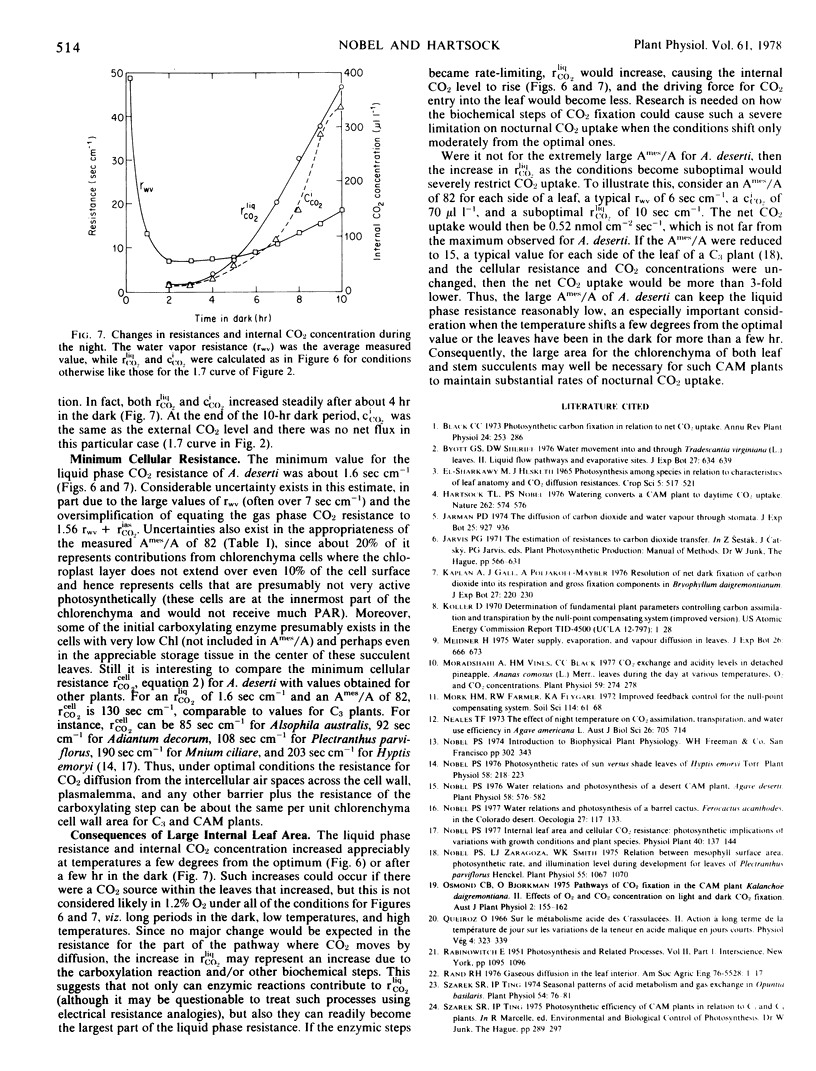
Selected References
These references are in PubMed. This may not be the complete list of references from this article.
- Moradshahi A., Vines H. M., Black C. C. Carbon Dioxide Exchange and Acidity Levels in Detached Pineapple, Ananas comosus (L.), Merr., Leaves during the Day at Various Temperatures, Oxygen and Carbon Dioxide Concentrations. Plant Physiol. 1977 Feb;59(2):274–278. doi: 10.1104/pp.59.2.274. [DOI] [PMC free article] [PubMed] [Google Scholar]
- Nobel P. S. Photosynthetic Rates of Sun versus Shade Leaves of Hyptis emoryi Torr. Plant Physiol. 1976 Aug;58(2):218–223. doi: 10.1104/pp.58.2.218. [DOI] [PMC free article] [PubMed] [Google Scholar]
- Nobel P. S. Water Relations and Photosynthesis of a Desert CAM Plant, Agave deserti. Plant Physiol. 1976 Oct;58(4):576–582. doi: 10.1104/pp.58.4.576. [DOI] [PMC free article] [PubMed] [Google Scholar]
- Nobel P. S., Zaragoza L. J., Smith W. K. Relation between Mesophyll Surface Area, Photosynthetic Rate, and Illumination Level during Development for Leaves of Plectranthus parviflorus Henckel. Plant Physiol. 1975 Jun;55(6):1067–1070. doi: 10.1104/pp.55.6.1067. [DOI] [PMC free article] [PubMed] [Google Scholar]


